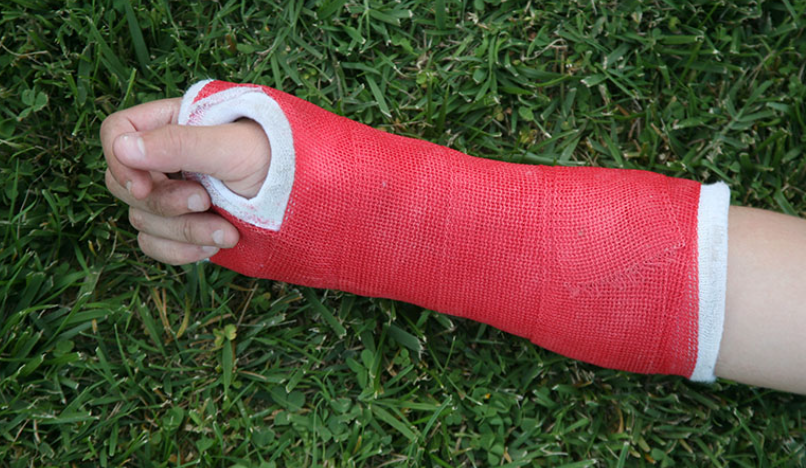
Fractures & Broken Bones
 A broken arm or leg may seem like a rite-of-passage for childhood, but
a fracture can be a serious injury. The rigid skeleton to which all your
muscles and tendons attach is compromised when part of it is broken.
A broken arm or leg may seem like a rite-of-passage for childhood, but
a fracture can be a serious injury. The rigid skeleton to which all your
muscles and tendons attach is compromised when part of it is broken.
Sprains are similar to fractures, except they involve tears in the ligaments, the bands of tissue holding your skeleton together. When accidents happen, and you or loved ones suffer from a sprain or a possible broken bone, visit Legacy ER & Urgent Care. Our fully equipped Emergency Room and Urgent Care facilities are staffed by ER-trained physicians and staff with on-site CT, X-ray, ultrasound, and labs.
What Causes Fractures, Broken Bones, & Sprains?
Trauma
falling, automobile accidents, physical attacks, and football tackles can all cause fractures and breaks.
Osteoporosis
the bones are weakened and more easily broken than healthy bone.
Repetitive Motion
overuse can cause muscles to tire, placing greater force on the bone to which it is attached. Eventually, a stress fracture results. Athletes often develop stress fractures.
What to Do if You Suspect a Fractured Bone?
You should visit your nearest Legacy ER & Urgent Care as soon as possible if you suspect you have a sprain or broken bone.
- If you suspect a bone is broken, attempt to keep the injured area stable.
- Do NOT attempt to “set” the bone yourself.
- If it is a compound (open) fracture, gently apply pressure to either side of the wound with clean materials to stem bleeding. Avoid contamination of the skin or bone. Call an ambulance or go to the nearest emergency room.
Broken ribs, skull fractures, and spinal fractures all require special care to avoid damage to nearby organs or nerves.
For sprains or breaks, visit any six convenient Legacy ER & Urgent Care facility.
Types of Fractures
- Stable fracture – The broken ends of the bone remain aligned and do not move far out of place.
- Compound fracture – A bone pierces the skin, or the skin is torn at the time of the fracture. The bone may or may not be visible. Also called an open fracture and can result in infection of the bone.
- Transverse fracture – the break is horizontal across the bone.
- Oblique fracture – the bone is broken at an angle.
- Comminuted fracture – the bone shatters into three or more pieces.
Fractures Common to Children
- Torus fracture – the top layer of bone is compressed, causing the other side to bend away. A stable fracture (see above). Also called a buckle fracture.
- Metaphyseal fracture – the break is across the upper or lower part of the bone shaft but does not affect the bone plate.
- Greenstick fracture – because children’s bones are still flexible, the bone may not completely break. Instead, it will bend and split like a green limb of wood that is bent.
- Growth Plate fracture – Occurs at or across the growth plate and requires prompt attention. Also called a physeal fracture. The growth plate is the area of growing tissue on either end of the long bones in children and adolescents.
Fractures vs. Sprain
What Does a Fracture Look and Feel Like?
Most bone fractures are extremely painful, preventing you from moving the injured body part. There may be bruising, swelling, and tenderness around the area of the break. A limb may appear to be out of place in the case of a compound fracture, causing a deformity.
What Does a Sprain Look and Feel Like?
- There may be some swelling or bruising.
- You may feel pain or discomfort when using the sprained joint.
- Tendons, cartilage, and blood vessels may also be damaged as well as the ligaments.
Fractured bones and sprained joints are painful, and some require immediate treatment.
Please visit your nearest Legacy ER & Urgent Care facility if you need care.
